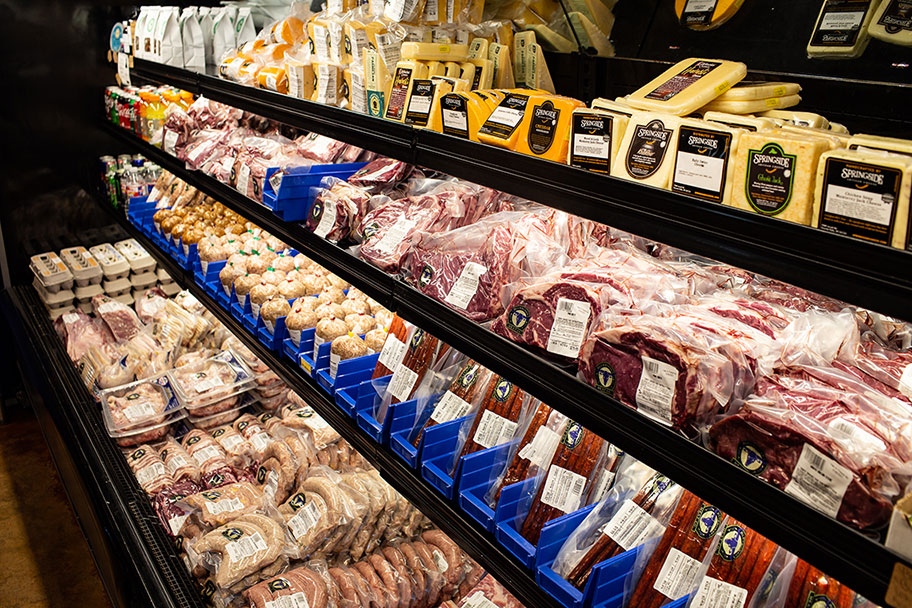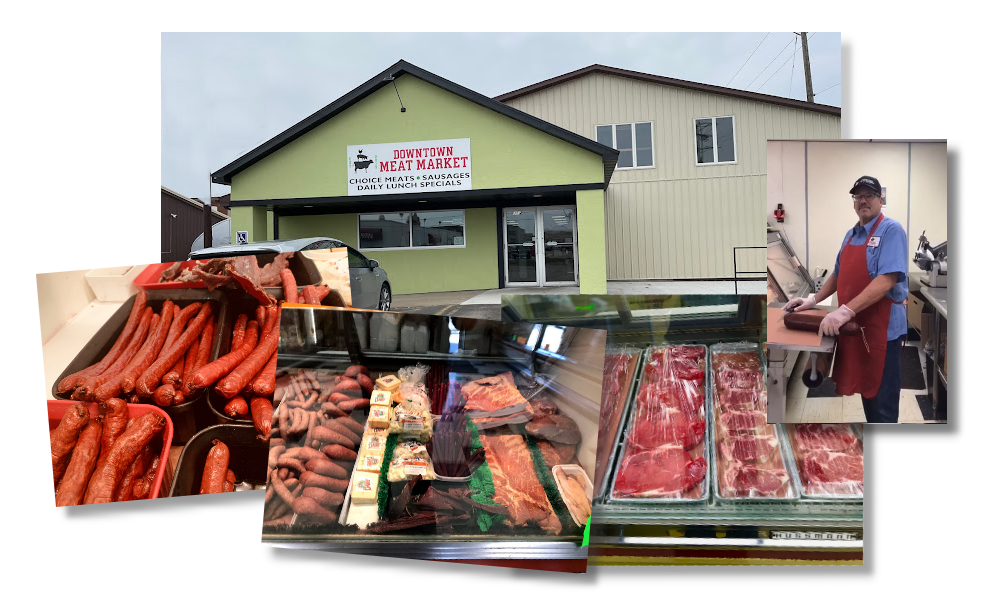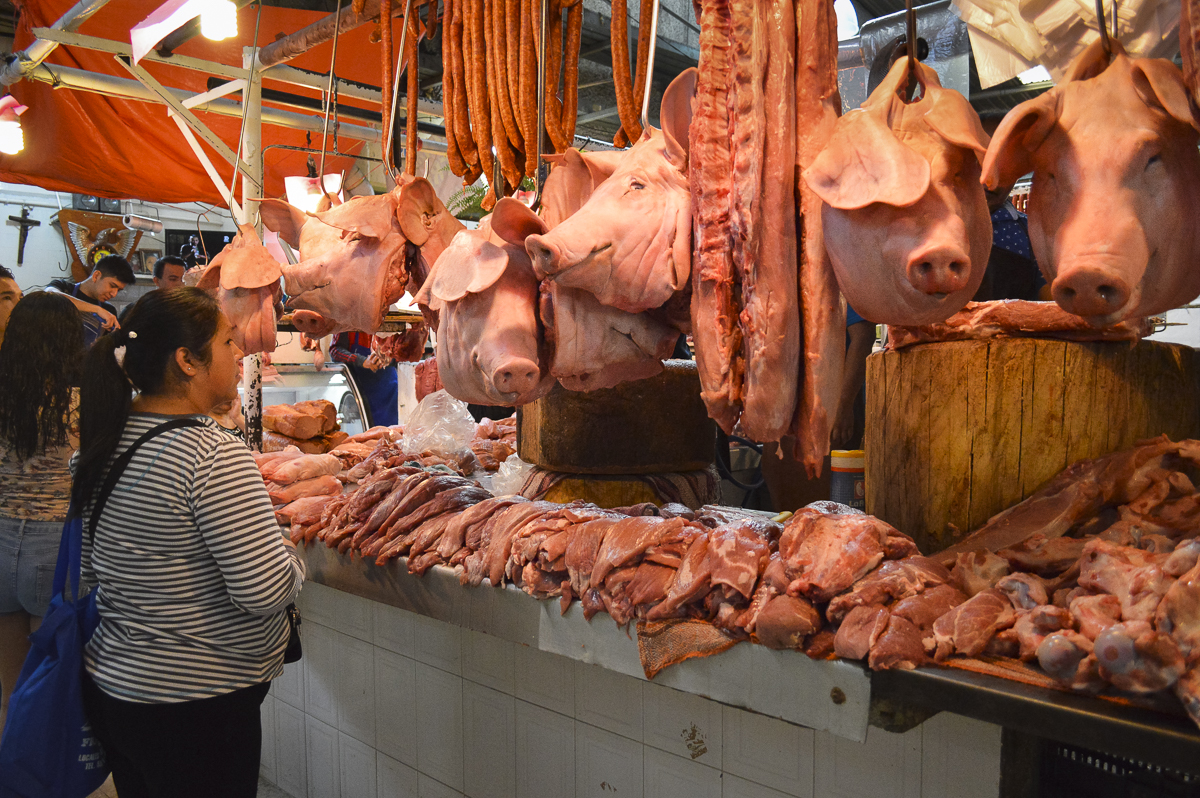Get the most effective Bargains on Fresh Meat at Bagley Farms Meat Market Edwardsville IL
Get the most effective Bargains on Fresh Meat at Bagley Farms Meat Market Edwardsville IL
Blog Article
Reveal the Art of the Butcher's Cut in a Modern Meat Market
In the ever-evolving landscape of contemporary meat markets, the butcher's cut has actually transcended its conventional origins, merging age-old workmanship with modern methods. What truly sets the modern-day butcher apart is their capability to build a deeper link in between consumers and the beginnings of their meat.
Evolution of Butchery Methods

The mid-20th century saw butchery methods even more refined by clinical understandings into muscle biology and meat aging, boosting both inflammation and taste. Innovations like vacuum cleaner packaging and refrigeration extended item shelf-life, enabling butchers to diversify offerings and boost quality assurance. This period additionally noted the rise of customized devices, such as band saws and meat slicers, which enhanced accuracy and effectiveness in meat processing.
Electronic systems currently aid in monitoring pet provenance and optimizing cuts to satisfy specific customer preferences. Furthermore, a resurgence in artisanal butchery has actually arised, blending conventional abilities with modern understanding to provide to customers seeking honest and lasting meat alternatives.

Understanding Meat Cuts

Recognizing the complexities of meat cuts is important for both butchers and customers seeking top quality and value. For butchers, specific cuts show ability and respect for the craft, ensuring marginal waste and optimal return.
The main groups of meat cuts include primitive, sub-primal, and retail cuts. Primal cuts, such as the loin, rib, and chuck, are the big sections at first divided from the carcass. Butchers then damage these down further right into sub-primal cuts, before lastly generating retail cuts offered to customers, like ribeye or tenderloin. Each stage needs mindful attention to physiological framework and muscle mass make-up.
Understanding muscle mass make-up is essential; muscle mass made use of more often by the animal often tend to be harder and are best suited for sluggish cooking techniques, while less-used muscle mass, like those located in the loin, are more tender and ideal for barbecuing or roasting. Experience with these differences encourages customers to make informed choices, enhancing their culinary ventures.
Selecting Quality Meat
Selecting the best meat involves even more than just selecting a visually appealing item from the display. The art of picking high quality meat requires a critical eye and knowledge of details qualities that signify quality and excellence.
Second of all, think about the marbling, which describes the white flecks of fat within the muscular tissue. Appropriate marbling is a key sign of inflammation and flavor, as it thaws during food preparation, enhancing the meat's juiciness. Bear in mind, higher marbling commonly correlates with superior quality cuts, such as USDA Prime.
Structure is an additional vital factor; meat ought to really feel firm to the touch, not slimy or extremely soft. Additionally, bear in mind the scent. Fresh meat ought to have a tidy, neutral smell, devoid of any kind of sour or off-putting odors.
Coupling Cuts With Cooking Techniques
Successfully matching cuts of meat with the suitable cooking techniques is necessary for attaining optimum taste and appearance. These methods enhance the meat's natural flavors and ensure a juicy finish.
Conversely, tougher cuts like brisket and chuck roast are abundant in collagen, which damages down into gelatin when cooked gradually. These cuts are ideal for braising or slow-moving roasting, permitting the meat to soften gradually and establish deep, complicated flavors. Similarly, cuts such as brief ribs and pork shoulder prosper with slow-cooking techniques, where prolonged cooking times transform their durable appearances right into succulent dishes.
Lamb shanks and oxtail, which require prolonged food preparation to tenderize, are perfect prospects for cooking or slow simmering. These approaches coax out abundant, hearty helpful resources tastes while preserving moisture. By recognizing the unique features of each cut, cooks check that and home chefs alike can elevate their culinary creations, making certain each meal is both satisfying and unforgettable.
The Butcher's Role Today
Navigating the advancing landscape of the modern-day meat market, the butcher's function today extends past mere prep work of cuts. Contemporary butchers are culinary artisans, teachers, and advocates for lasting methods.
In enhancement to crafting exact cuts, butchers now involve directly with clients, offering cooking recommendations and customizing choices to suit specific needs and preferences. Their proficiency in meat aging, marbling, and flavor accounts equips consumers to make enlightened choices, enhancing their culinary experiences. This tailored solution exhibits the butcher's evolving function as a trusted advisor in the kitchen area.
In addition, butchers are pivotal in reducing waste, making use of entire animals to create diverse items such as sausages and stocks - bagley farms meat market edwardsville il. This detailed strategy not just values the pet but also aligns with contemporary sustainability objectives. In this means, the modern butcher embodies both tradition and development, adapting to an ever-changing market while preserving the artistry and integrity of their craft

Conclusion
The modern butcher's craft elaborately weaves conventional strategies with contemporary innovations, highlighting sustainable check my site techniques and ethical sourcing. Proficiency in comprehending varied meat cuts and high quality indicators equips butchers to provide enlightened recommendations, straightening particular cuts with optimum cooking approaches. This knowledge not just elevates cooking experiences but likewise reinforces the connection in between consumers and the origins of their food. By recognizing historical methods while welcoming contemporary demands, the butcher's duty remains crucial in today's innovative meat market.
Report this page